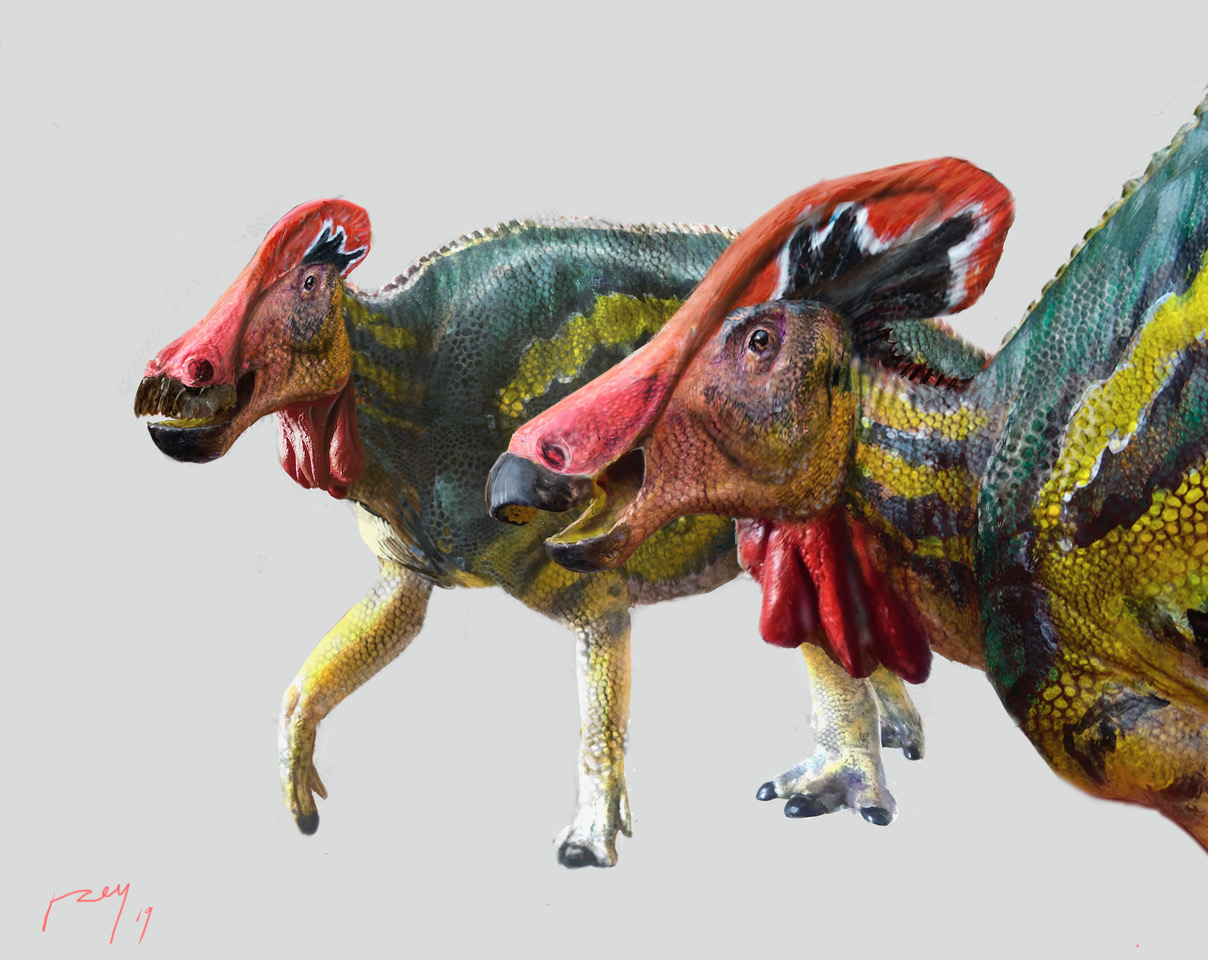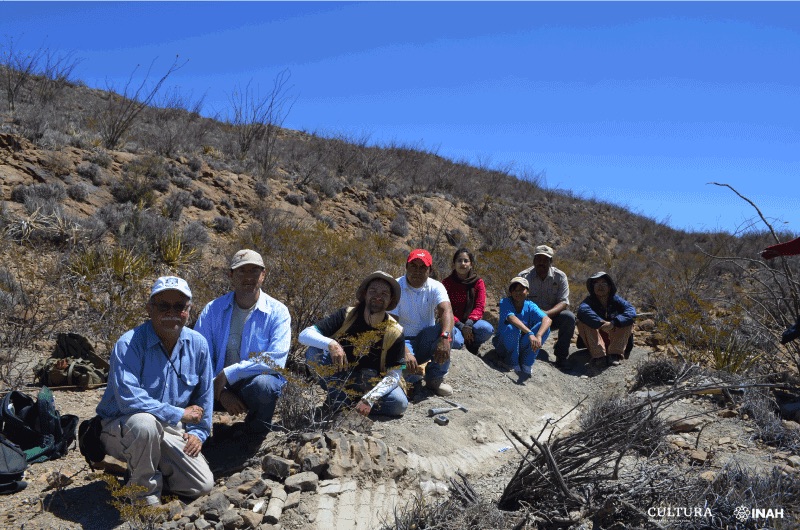Did these crested dinosaurs talk to each other with low-pitched sounds?
The dinosaur may have been quite "talkative."

Paleontologists discovered fossils of a plant-eating dinosaur that belonged to a previously unknown species, one that was likely "talkative," based on the ear structure, which would've been adept at picking up low-frequency sounds.
The tail of the dinosaur, which lived 73 million years ago, was first discovered in 2005 in the Cerro del Pueblo Formation near Presa de San Antonio in Coahuila, northern Mexico, according to a new study describing the findings.
About eight years later, paleontologists from the National Institute of Anthropology and History (INAH) in Mexico and the National Autonomous University of Mexico (UNAM) worked together to recover the tail and any other remains. They needed to quickly rescue the tail that was protruding from the surface of the Earth, which was exposed to rain and erosion, according to the statement.
Related: Photos: Early dinosaur cousin looked like a Croc
"Although we had lost hope of finding the upper part of the specimen, once we recovered the tail we continued digging under where it was located," lead author Ángel Alejandro Ramírez Velasco, from the UNAM's Institute of Geology, said in a statement. "The surprise was that we began to find bones such as the femur, the scapula and other elements."

The dinosaur remains were well preserved, suggesting the individual had died in a sediment-rich body of water that would have been quick to blanket and protect the remains, according to the statement. In fact, the paleontologists were able to recover 34 bones fragments, which made up 80% of the dinosaur's skull, including its crest, its lower and upper jaws, palate and neurocranium, the part of the skull that would have housed the brain.
Because the researchers could recover so much of the dinosaur's skull, they were able to compare this individual with other known species. At first, based on its tail, the researchers knew the dinosaur belonged to a family of duck-billed dinosaurs called hadrosaurs. But they quickly realized that the crest and nose differed from those of any known hadrosaurs, and what they had in their hands represented a new genus and species.
Sign up for the Live Science daily newsletter now
Get the world’s most fascinating discoveries delivered straight to your inbox.
The researchers named the species Tlatolophus galorum. They named the genus after the Nahua Indigneous group's word tlahtolli, which means "word," and the Greek word lophus, which means "crest."
The name is fitting, as the dinosaur's crest is shaped like a "virgula" or "a symbol used by Mesoamerican peoples to represent communicative action and knowledge in itself in codices," according to the statement.
By examining the structure of the ear bones, the researchers were even able to get a glimpse at how the dinosaurs may have communicated.
"We know that they had ears with the ability to receive low-frequency sounds, so they must have been peaceful but talkative dinosaurs," Ramírez Velasco said in the statement. The dinosaurs may have also emitted loud sounds to scare off carnivores or for breeding, he said.
The findings were published on May 11 in the journal Cretaceous Research.
Originally published on Live Science.

Yasemin is a staff writer at Live Science, covering health, neuroscience and biology. Her work has appeared in Scientific American, Science and the San Jose Mercury News. She has a bachelor's degree in biomedical engineering from the University of Connecticut and a graduate certificate in science communication from the University of California, Santa Cruz.










